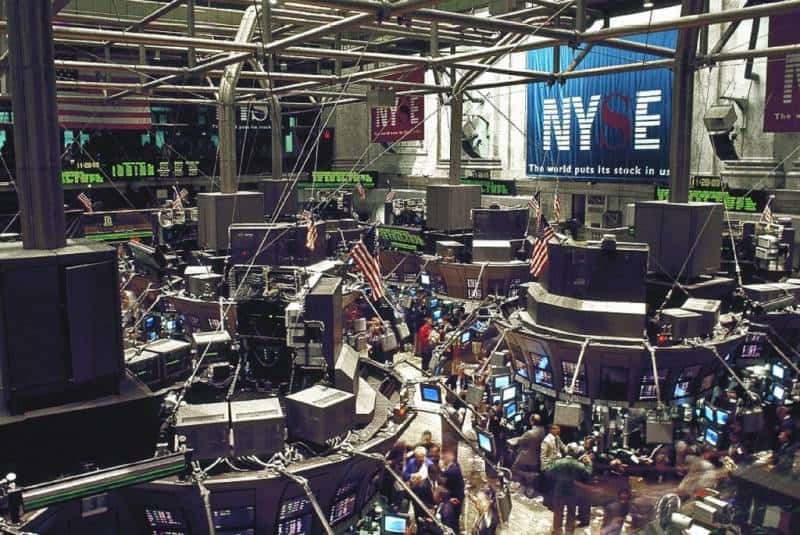Introduction
The stock market is one of the most valuable components of the market economy. It can create a lot of opportunity, but it can be difficult to understand. There’s so much jargon and expertise involved, just thinking about can induce a headache. In spite of all the complexity, there are ways to break it down and understand how and why the stock market works, and how you can use it to achieve your personal financial goals. Before we get there, we have to answer some basic questions about the stock market.
What is the Stock Market?
 In the simplest of terms, the stock market today is a virtual place where shares of publicly held companies are traded. The effect of the market is companies can collect capital in exchange for a portion of ownership of that company. This lets investors participate in the monetary achievements of companies while insulating themselves from the risk involved with starting a business. Also, Investors can put small amount of money into different companies and manage their risk by diversifying their portfolio.
In the simplest of terms, the stock market today is a virtual place where shares of publicly held companies are traded. The effect of the market is companies can collect capital in exchange for a portion of ownership of that company. This lets investors participate in the monetary achievements of companies while insulating themselves from the risk involved with starting a business. Also, Investors can put small amount of money into different companies and manage their risk by diversifying their portfolio.
We can break the stock market down further into the primary and secondary market. When a company decides to go public, all their shares are sold on the primary market first. All trading that happens after that takes place on the secondary market. Usually, all the buying going on the primary market happens between investment banks and institutional investors, like a hedge fund. All trading after this, including individuals looking to buy shares in any company, are doing so in the secondary market, though some countries and exchanges allow individuals to invest in the primary market.
Why is investing so important?

If you like money, you’ll want to invest. Saving money will earn you interest, but so slowly it’s barely worth mentioning. When your money sits idle in the bank, inflation will eat away at its value, ultimately making life more difficult. Investing isn’t a get rich quick scheme by any stretch, but for planning for retirement and reaching long term financial goals, investing the best and most beneficial way to do so.
What are the different types of stocks?
Because economists are bad at naming things, the most common stocks are referred to as ‘common stocks’. When people talk about stocks, they are almost certainly talking about common stocks. They represent a small piece of ownership for their holder, entitle their owners to dividends (a small piece of a company’s profits), and account for one vote when electing board members.
The other type of stock is called preferred stocks. Like common stocks, preferred stocks represent a peice of ownership in a company, but usually don’t entitle their holders to the same voting rights. One advantage of preferred stocks is they entitle holders to the first right over dividend and cash in case the company is acquired or liquidated. Because preference shares provide additional benefits, they are usually priced higher than common shares.
These are the two main types of stocks, but stocks can be customized by companies into different classes, generally so the company has more control over voting rights. However a company breaks down and customizes their stock is up to them, but it will always be a variation on these two basic principles.
How to Read A Stock Quote
Understanding the ideas behind the stock market is pretty simple. Where we tend to lose people is in the nitty gritty of the numbers. Different brokers and websites show this data differently, but once you break it down it’s not too complicated.
In a stock quote, you’ll be able to see the highest and lowest price a stock has traded for over the past year. You’ll also be able to see the company name, and what kind of stock you’re dealing with. If there are no letters or symbols after the company name, it’s a common stock.
Another key piece of information in a stock quote is how a company is represented. It’s called a ticker. For example, Apple Inc. Would be represented as AAPL, Microsoft would be represented as MSFT, etc.
Now we’re moving into the more complicated areas of a stock quote regarding dividends.
Stock quotes will show you the annual payment per share (if this space is blank, that company is not paying dividends). You’ll also be able to see how high the return is on the dividend. That means they take the dividend per share, divide it by the price of the share, and what you get is called the dividend yield.
On the quote, you can learn what the stock’s Price/Earning share is. The P/E is calculated a few different ways, but typically it’s the current stock price divided by the earnings of each share over the last four quarters, giving us what’s called the P/E ratio. How important the P/E ratio is varies wildly from situation to situation.
Finally, a stock quote will give you a lot of insight on how a stock performed that day. This includes the volume of stocks sold, the highest and lowest price the stock sold for, the amount of change in a stock’s price from the day before and the price of the stock when the market closed.
Investing 101 – Let’s get you started in the stock market.
What makes causes stock prices to change?
If you can figure out this question, congratulations on your billions. Please invite us to eat dinosaur caviar on your gold boat floating in your sea of money. We’re busy, but we’ll make time.
Stock prices change for a massive variety of reasons, ranging from the news, opinions of prominent investors, going all the way to natural disaster or political unrest. It might be a complicated chain of events that leads to a stock dipping in price, it might be as simple as basic supply and demand for a stock.
The complexity involved in why stock prices change make the stock market difficult to predict. If a stock has been climbing in price, investors fearing a correction may begin to worry and sell off what they have at the highest value. This might lead to a lot of investors selling their stock, and the price of the stock falling, starting a new trend for that stock.
Knowing how and why the trajectory of stock will change is like trying to count the grains of sand on a beach while you’re being eaten by a shark. If people always made totally rational and predictable decisions, the stock market would be easier to predict, but still not totally. That’s not the case, though. People often buy stocks with an equally complicated set of personal beliefs and biases, even after they’ve considered all the relevant data. In short, the stock market is difficult to predict and complicated because people are difficult to predict and complicated.
When is the Best Time to Buy and Sell?

With all the complexity in the stock market, it’s easy to forget that the most important part of investing boils down to two fundamental decisions: when to buy and when to sell.
Typically the best time to buy is when people in the market are discouraged from buying themselves. The best time to sell is when others are more interested in buying. When people are pessimistic about a stock, or the market in general, you’re more likely to see good stocks dip in price, allowing you to pick them up for cheap. If people are happy with a stock, there’s more incentive for them to buy, even as prices climb.
This principal needs to exercised with a degree of caution, though. When a company’s stock price has fallen, the most important question is why. As discussed, the reason behind a rise or fall in a stock’s price can be influenced by innumerable factors, so it’s best for investors to develop a principal for themselves and follow it as much as possible.
The Stock Market Today

The stock market isn’t kind, it’s adversarial trading by nature. No matter the level of understanding of the market you have, nothing can beat actual experience in investing. Beginning and managing a portfolio can seem daunting, but today there’s more information to get you started and keep you going than ever before.
For years the best way to have access to the market, and to understand what happens within it, was to pay for service that could cost hundreds or thousands of dollars a month. Today there are tools that bring down the traditional barriers that allow ordinary people the same level of insight as some of the most influential and successful investors in the world.

CityFALCON is one of these tools. By bringing you relevant information from twitter and hundreds of different news publications, CityFALCON allows anybody to make an informed investment decision. CityFALCON also helps people completely new to investing here
So many people are held out of the market because a lack of information, or because of a lack of resources. CityFALCON gives you the information you need, and it does this for free.
With CityFALCON, the excuses to avoid investing are gone. This doesn’t mean emptying your savings account and dumping it into a ‘hot stock’ that one guy from works keeps telling you about. You have the tools to be a smart investor. Now is the time to stop delaying building your portfolio, and start thinking seriously about what your long term financial goals are, and how you want to achieve them.




Leave a Reply